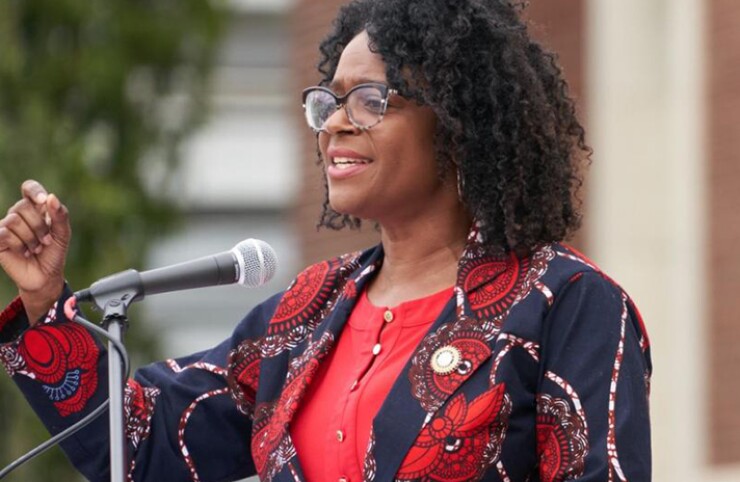A California Senate committee received few details from the department charged with building a public broadband program on its plans to expand into underserved neighborhoods.
The program faced criticism last year for prioritizing upscale cities, like Beverly Hills, over impoverished and middle-class areas, such as Los Angeles’ South Central region and Oakland, communities lacking in high-speed internet service.
California Sen. Lola Smallwood-Cuevas, D-Los Angeles, pressed Mark Monroe, deputy director of the Middle-Mile Broadband Initiative in the California Department of Technology, to provide concrete details as to when projects in underserved neighborhoods would begin.
“I will remind you that the cuts made to projects (when funding was sliced in the wake of the fiscal 2023 budget deficit) were not equitable,” Smallwood-Cuevas said during a Senate Budget and Fiscal Review-subcommittee hearing on state administration and general government.
“While 17% of funding to the statewide network was cut, 77% of those cuts were to South Central Los Angeles and Oakland, and another 56% of their middle mile needs were cut at the time.”
California state Sen. Lola Smallwood-Cuevas’ office
Monroe responded they are still trying to figure out how this year’s recently announced proposed cuts to broadband funding will affect the program, adding, they just made a request for information on projects and are awaiting responses.
Gov. Gavin Newsom’s May revision to his budget proposal called for $2 billion in cuts to public broadband projects intended to bring high-speed internet to all Californians and close the digital divide.
Budget committees in both houses are in the thick of discussions on various aspects of state government, many dealing with
In 2021, when the state was experiencing a record surplus, Newsom signed a law dedicating $3.25 billion to building a
The federal government has also made a big push to help states provide more equitable access to the internet. Last year, $42 billion was approved for the Biden administration’s
Cuts in the May revise include a $1.7 billion reduction in broadband infrastructure projections, $325 million in cuts to a fund for broadband projects backed by local governments, tribal governments and nonprofit organizations in disadvantaged communities and rolling back $34 million to equip libraries in rural and underserved communities with high-speed internet.
Monroe told the committee he wouldn’t be able to provide them with more detail about which segments of the project are moving forward until July 19.
“You mean you won’t be able to give us more information until after we have approved the budget,” Smallwood-Cuevas said.
Lawmakers have to approve a budget by June 15, and Newsom has until July 1 to sign it.
“Now that we aren’t getting the $1.5 billion, we will have to reevaluate those 10,000 miles,” Monroe said.
The California Department of Transportation (Caltrans) has provided an update on its progress toward preconstruction, but “we just issued another request for information to find different partners and leases and we are now evaluating the 50 proposals.”
“So after the budget passes, we will then know if our communities are in the Caltrans plan,” Smallwood-Cuevas said. “But we won’t have the detail — for me personally, my district — which was a community left out, which the administration confirmed would be prioritized in this round of budget expenditures … You are saying we won’t know until after the budget is approved and then it’s a wait-and-see, maybe?”
“It is still our intent to be able to get to those areas,” Monroe said, though he added he won’t have more information until they complete negotiations in July or August.
Smallwood-Cuevas reminded Monroe the impetus behind the program was to enable marginalized communities to go about their daily lives.
“During the COVID-19 stay-at-home orders, the kids in my district had to do their homework at the closest McDonald’s because they didn’t have internet at home,” she said.
Without internet, you can’t get virtual doctor appointments, apply for jobs or do homework, she said.
“We don’t have any clarity as to whether these communities will receive the help they need,” Smallwood-Cuevas said. “That is an unacceptable response.”
